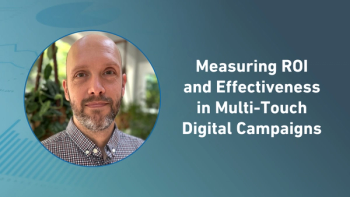
Proven Methodologies Resulting in Effective and Efficient CTA Process
The management and oversight of clinical trials agreement contracts are still handled through spreadsheets or document management systems ill equipped for an efficient CTA lifecycle.
Worldwide, over 10,000 study-sites begin negotiations on a Clinical Trial Agreement (CTA) every month, and more often than not, the management and oversight of these contracts are still handled through spreadsheets or document management systems ill equipped for an efficient CTA lifecycle. This non-productive process leads to excessive manual tracking (often by high-paid lawyers), lack of transparency and ultimately slow contract execution. Each day that a contract sits on someone’s desk before becoming fully executed is another day’s delay in patient enrollment and study timeline slippage. With a top-200 prescription drug selling for $1,776,000/day (2010 sales -drugs.com), these delays cost sponsors a lot of lost opportunity cost for a process that garners insufficient attention.
There are readily implementable clinical IT and business solutions that can expedite the contract negotiation process, and below are proven methods that have been shown to enhance CTA management productivity.
- Begin with the end in mind (tracking & reporting). Sponsors increasingly want real-time updates on the status of contracts. This means that a management system needs to have the
appropriate data structure to track the status, location and time at location . This information is key to ensure contracts move forward toward execution. Additionally, the system should produce a high-level summary tracking all sites as well as more detailed activity reports for individual site/contracts - without additional manual effort.
- Notifications. The system needs to produce notifications in the form of To-do’s, e-mails or text messages that inform managers of extended inactivity. If a contract has been sitting somewhere longer than it should, the system needs to let you know. It should also allow clinical personnel to set these reminders based on their local knowledge of the situation. Why should contract personnel spend time manually pouring over spreadsheets, when the CTA management system can do the work for them?
- Flexible Workflow. The tracking system needs to be flexible enough to handle the variation inherent in the CTA lifecycle. No two contracts take the same path to completion. One contract at one location may be completed in a day. A second location may encompass a tripartite agreement with additional ancillary agreements and result in 7 rounds of negotiation. Given this, if a CTA system hard-codes a “standard process,” contract personnel will be forced back in their spreadsheets to manage and track agreements (Figure 1). A properly designed tracking system enables sponsors to measure and improve business productivity by focusing resources on areas lacking in productivity. For example, if CTAs sit at study sites for an average of 12 days, the sponsor should focus more resources on sites that hold CTAs for longer than 12 days. This allows for
resource optimization and cost savings .
- Portals & Automated Reports. Personnel oftentimes spend resources generating manually configured reports and sending them to management on a regular basis. With a properly architected system, this should be an automated process.
The management of Clinical Trial Agreements has long been an overlooked area in the clinical study process, however, clinical operations groups can easily improve productivity if done right. With advancements in cloud technology, and innovations in business process and resource management, IT departments and software vendors can give contract management teams the tools they need to manage the CTA process efficiently; lawyers can spend more time on negotiation and contract language and less time buried in reporting and chasing stalled agreements. Implementing this solution enables management to not only receive the information they need, but, also achieve faster contract execution and experience cost savings. For CROs, it’s happy clients and a more efficient legal team. Everybody wins with an efficient and effective CTA lifecycle.
Do you have the expertise to join the Breakthrough Solutions in Clinical Trials & Healthcare Group? Apply
Newsletter
Stay current in clinical research with Applied Clinical Trials, providing expert insights, regulatory updates, and practical strategies for successful clinical trial design and execution.






.png)



.png)



.png)
.png)
